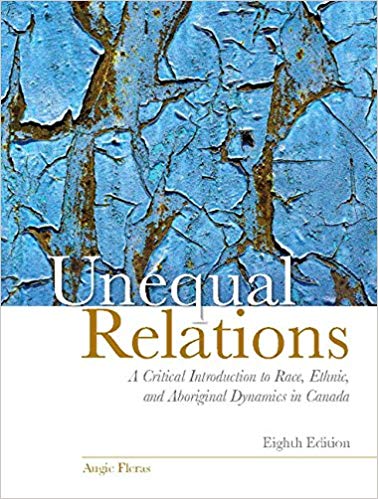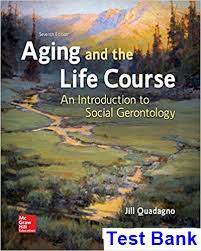Unequal Relations A Critical Introduction to Race, Ethnic, and Aboriginal Dynamics in Canada 8 Edition By Angie Test Bank
Original price was: $55.00.$23.00Current price is: $23.00.
Digital item No Waiting Time Instant Download
ISBN-13: 9780137869824
Publisher : Pearson Canada
Author: Augie Fleras
Description
Unequal Relations A Critical Introduction to Race, Ethnic, and Aboriginal Dynamics in Canada By Angie Test Bank
Unequal relations, 8th Ed. (Fleras)
Chapter 1
race, ethnic, and aboriginal relationS:
patterns, paradoxes, perspectives
Multiple Choice
Select the best available response
MC 1-1
In what year was Canada’s Multiculturalism Act passed?
- a.1960
- b.1971
- c.1982
- d.1988
Answer: d
Difficulty: 1
Page: 3
MC 1-2
What was the significance of the 1967 Immigration Act?
- a.Immigration was restricted to European countries.
- b.Quotas and preferences on the basis of race or ethnicity were abolished.
- c.An open door policy that allowed entry to anyone regardless of their credentials.
- d.It opened the door to Cold War refugees from the Soviet Union.
Answer: b
Difficulty: 3
Page: 5
MC 1-3
What was the most significant aspect about Canada’s first Citizenship Act?
- a.It disregarded any distinction between foreign-born and native-born Canadians for citizenship purposes.
- b.It automatically conferred citizenship on those of British ancestry living in Canada.
- c.It established a different citizenship for Aboriginal peoples and non-native Canadians.
- d.It abolished all immigration quotas based on race or ethnicity
Answer: a
Difficulty: 3
Page: 5
MC 1-4
Canada received the Nansen Medal from the United Nations in 1986 for ______?
- a.Its promotion of an official multiculturalism
- b.Its humanitarian response to the global refugee crisis
- c.Passage of the Charter of Rights and Freedoms in 1985
- d.For being the first country to constitutionally recognized Aboriginal rights
Answer: a
Difficulty: 1
Page: 5
MC 1-5
A UN Development ranking of the best countries in the world in which to live puts Canada eighth overall. What is the global ranking if Canada’s Indigenous peoples are disaggregated from Canada and treated as an independent country?
- 101
- 63
- 34
- 121
Answer: b
Difficulty: 2
Page: 9
MC 1-6
According to the 2011 National Household Survey, approximately how many ethnic origins were reported in Canada?
- a.100
- b.150
- c.200
- d.250
Answer: c
Difficulty: 1
Page: 12
MC 1-7
The constitutional status of Canada’s Indigenous (or Aboriginal) peoples can be divided into three categories. Which of the following is NOT defined as a constitutional category?
- Native Canadians
- Status Indians
- Metis
- Inuit
Answer: a
Difficulty:1
Page: 12
MC 1-8
Canada possesses a high proportion of foreign born residents (“immigrants”). What country has the highest percentage of foreign born relative to the total population?
- New Zealand
- United States
- Australia
- Germany
Answer: c
Difficulty: 1
Page: 13
MC 1-9
What percentage of Canada’s population in 2011 consisted of those who reported a racialized (“visible”) minority status?
a. 23.5 percent
b. 9.1 percent
c. 13.4 percent
d. 19.1 percent
Answer: d
Difficulty: 1
Page: 14
MC 1-10
Four types of contact scenarios can give rise to patterned intergroup relations in ethno-racially diverse societies. Which of the following is NOT considered one of these contact situations?
- a.Diffusion
- b.Annexation
- c.Forced migration
- d.Colonization
Answer: a
Difficulty: 2
Page: 16-17
MC 1-11
What do we call the deliberate mass killings of a despised group by another group (often government backed), both of whom live in the same country or territory?
- a.Genocide
- b.Ethnic conflict
- c.Forced assimilation
- d.Apartheid
Answer: a
Difficulty: 1
Page: 18
MC 1-12
The U.N. has included 5 classes of action that can be defined as genocide. Which of the following is NOT included in this list of genocidal actions?
- a.Members of a group are slaughtered to hasten their disappearance
- b.The male members of a group are singled out for slaughter on the grounds they are actively involved in subversive activities
- c.Children are transferred from one group to another to facilitate the demise of the community
- d.Births are curbed through imposition of compulsory sterilization
Answer: b
Difficulty: 2
Page: 17-18
MC 1-13
What concept describes a predominantly one-way process of absorption of the subdominant group into the dominant sector?
- a.Assimilation
- b.Integration
- c.Collective definition
- d.Pluralism
Answer: a
Difficulty: 1
Page: 19
MC 1-14
What kind of segregation is the result of governments that tacitly condone forced separation between groups by not actively intervening to dismantle the “colour bar”?
- a.De facto segregation
- b.De jure segregation
- c.Voluntary separation
- d.Imposed segregation
Answer: a
Difficulty: 3
Page: 21
MC 1-15
The Hutterites of Western Canada are an example of what kind of diversity governance model?________.
- a.Forced segregation
- b.Voluntary separation
- c.Integration
- d.Assimilation
Answer: b
Difficulty: 2
Page: 21
MC 1-16
What governance model of race, ethnic, and Aboriginal relations incorporates the concept of the melting pot?
- a.Integration
- b.Cultural Pluralism
- c.Segregation
- d.Assimilation
Answer: a
Difficulty: 2
Page: 22
MC 1-17
According to the text, pluralism as governance can be expressed in several ways. Which of the following is NOT regarded as part of a pluralist model?
- a.Monoculturalism
- b.Multiculturalism
- c.Binationalism
- d.Multinationalism
Answer: a
Difficulty: 2
Page: 23-24
MC 1-18
What assumption about (or approach to) diversity best characterizes integration as a diversity governance model?
- Despises diversity
- Rejects diversity
- Isolates diversity
- Tolerates diversity
Answer: d
Difficulty: 1
Page: 24
MC 1-19
What dimensions of society is emphasized by a functionalist perspective?
- a.Conflict
- b.Change
- c.Stability
- d.Social dynamics
Answer: c
Difficulty: 1
Page: 25
MC 1-20
What term describes a process of control through consensus rather than coercion?
- a.Social dynamics
- b.Hegemony
- c.Marxism
- d.Collective definition
Answer: b
Difficulty: 1
Page: 26
MC 1-21
Two variants of Radical Conflict theory are discussed in the textbook, namely, ____ and ____.
- a.Class and Race
- b.Marxist and Neo Marxist
- c.Collective Definition and Dualisms
- d.Marxist and Feminist theory
Answer: d
Difficulty: 1
Page: 26
MC 1-22
What variation of symbolic interactionism emphasizes the process by which intergroup relations are informed by opposing dynamics both within and between dominant and subdominant groups?
- a.Internal colonialism
- b.Collective definition
- c.Feminist Theory
- d.Hegemony
Answer: b
Difficulty: 3
Page: 27
MC 1-23
Which sociological model of society tends to see the nature of society as an ongoing human accomplishment?
- a.Functionalism
- b.Radical Conflict
- c.Symbolic Interactionism
- d.Collective Definition
Answer: c
Difficulty: 1
Page: 28
MC 1-24
Which sociological perspective approaches multiculturalism as a contested site in which different interests interact to impose their definition of the situation?
- a.Functionalism
- b.Conflict
- c.Symbolic Interactionism
- d.Internal Colonialism
Answer: c
Difficulty: 1
Page: 30
MC 1-25
Which sociological perspective is most likely to define official Multiculturalism as an exercise in creating the ‘illusion of inclusion’?
- a.Functionalism
- b.Radical Conflict
- c.Interactionism
- d.Collective Definition
Answer: b
Difficulty: 1
Page: 30





Be the first to review “Unequal Relations A Critical Introduction to Race, Ethnic, and Aboriginal Dynamics in Canada 8 Edition By Angie Test Bank”